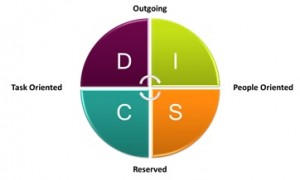Have you ever read chapter 10 of the Project Management Book of Knowledge? If not, I would recommend reading it because there is some really good information in there. It talks about planning, what method you could use to communicate and when to communicate. It talks about distributing the message and the communication model (Encode, transmit, decode, acknowledge, and feedback). Man, it even mentions writing style such as passive voice and sentence structure. In the end, however, it doesn’t really address why you and I don’t communicate effectively. Even if you did all of the above stuff, and more, we still may not be on the same page. How can it be that sometimes we are so good at communicating with certain people and others it is downright painful? There are some people where we can basically finish their sentences for them and there are others where you aren’t even in the same mountain range in figuring out what they are saying or where they are going for that matter. Everyone probably agrees that communication is an extremely important skill. If I am talking to you and you aren’t listening then we aren’t communicating. The question becomes, why aren’t you listening? In the end, it really is simple – It is because I am not communicating in a way that makes sense to you. I am communicating in a way that makes sense to me. This is why we “click” with some and don’t with others. A short story: Many years ago, I took the Myers Briggs personality assessment. I found out that I was an ISTJ (Introversion, Sensing, Thinking, and Judging). Basically it was telling me that I have no heart and no feelings. I probably should have been offended by that, but I wasn’t because, well….I have no heart or feelings so it’s all good. So, now what? I supposedly understood my personality better, but still didn’t know how to communicate effectively with some people. Then I learned about DiSC. DiSC is a behavior assessment tool based on the DiSC theory of psychologist William Marston; it does not measure intelligence, aptitude or values. It describes human behavior in regards to responding to challenges, influencing others, your preferred pace and how you respond to rules and procedures. The letters in “DiSC” refer to a different quadrant in a circle. “D” is for Dominance. “I” is for Influence. “S” is for Steadiness and “C” is for Conscientiousness. People that fall into the “D” and “I” tend to be outgoing. People that fall into the “C” and “S” are more reserved. “D” and “C” people tend to be more task focused and “I” and “S” people tend to be more people focused.
Now we’re getting somewhere. Once you understand which quadrant a person falls into (you and the person you are communicating with), you have a better idea of how to communicate with them. What is really cool is that we are dealing with behaviors. If you want to change your behavior, you can. At this point, you might be asking how do I know which quadrant? That will be the subject of my next posting. If you absolutely, positively can’t wait until the next posting, I highly recommend you visit Manager Tools and listen to their podcasts on DiSC. They have multiple podcasts that go into great depth about DiSC. If you have any questions or need help with your EPM solution or project management in general, please do not hesitate to call us @ 713-400-9200.


